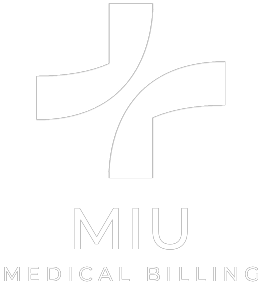Introduction
In the ever-evolving healthcare landscape, provider credentialing remains a critical process that ensures the highest standards of care and patient safety. As we approach 2024, healthcare organizations must stay vigilant in verifying their providers’ qualifications, licenses, and credentials. A comprehensive provider credentialing checklist is an invaluable tool for navigating the complexities of this process and ensuring compliance with the latest regulations and industry best practices.
1. Understanding Provider Credentialing in Healthcare: A Comprehensive Overview
Provider credentialing is a multifaceted process that verifies a healthcare provider’s qualifications, licenses, certifications, and professional standing. It encompasses various activities, from reviewing education and training credentials to conducting background checks, monitoring sanctions and exclusions, and ensuring compliance with state and federal regulations.
2. Developing a Robust Physician Credentialing Checklist
To ensure a thorough and efficient provider credentialing process, healthcare organizations must develop a comprehensive provider credentialing checklist. This checklist should serve as a roadmap, guiding the organization through the various steps and requirements for verifying a provider’s credentials and maintaining compliance.
3. Essential Components of a Provider Insurance Credentialing Checklist
A well-designed provider credentialing checklist should encompass the following key components:
- Provider Information Gathering: Collect and verify the provider’s personal information, educational credentials, licenses, certifications, and professional registrations.
- Education and Training Verification: Confirm the provider’s educational degrees, diplomas, residency or fellowship programs, and any additional relevant training or certifications.
- Licensure and Certification Checks: Verify the provider’s licenses and certifications are current, in good standing, and comply with state and federal requirements.
- Employment and Reference Checks: Validate the provider’s employment history and job responsibilities and obtain references from previous employers or colleagues.
- Malpractice and Claims History Review: Investigate any malpractice claims, settlements, judgments, or disciplinary actions related to the provider.
- National Practitioner Data Bank (NPDB) Query: Conduct a mandatory query of the NPDB to check for any reported disciplinary actions, malpractice payments, or other adverse actions.
- Criminal Background Check: Perform comprehensive county, state, and federal criminal background checks.
- Sanctions and Exclusions Screening: Screen the provider against various state and federal sanctions and exclusions lists, including the Office of Inspector General (OIG) List of Excluded Individuals/Entities (LEIE) and the System for Award Management (SAM).
- Professional Liability Insurance Verification: Confirm the provider has adequate professional liability insurance coverage, including policy limits, effective dates, and any exclusions or limitations.
4. Streamlining the Insurance Credentialing Process: Technology’s Role
In today’s digital age, technology is pivotal in streamlining the provider credentialing process. Healthcare organizations can significantly improve efficiency, accuracy, and data management by leveraging advanced credentialing software and automated systems. These tools can automate various tasks, such as gathering and verifying information, tracking deadlines, and generating reports, reducing the administrative burden on staff.
5. Maintaining Compliance: Ongoing Monitoring and Recredentialing
Provider credentialing is not a one-time event; it requires ongoing monitoring and periodic credentialing to ensure providers maintain their qualifications and professional standing. A robust provider credentialing checklist should include procedures for continuously monitoring licenses, certifications, sanctions, and disciplinary actions. Additionally, organizations should establish a credentialing process, typically conducted every two to three years, to reevaluate and revalidate a provider’s credentials.
6. Outsourcing Medical Provider Credentialing: Weighing the Pros and Cons
For some healthcare organizations, outsourcing provider credentialing to a specialized third-party vendor can be viable. Outsourcing can alleviate the administrative burden, provide access to expertise and resources, and streamline the process. However, considering cost, data security, and oversight capabilities is crucial to evaluating the pros and cons.
7. Elevating Patient Care Through Effective Provider Credentialing
Effective provider credentialing is pivotal in ensuring patient safety and delivering high-quality healthcare services. By thoroughly vetting providers’ qualifications, organizations can build a strong foundation of trust with patients and stakeholders. A rigorous provider credentialing checklist mitigates risks and demonstrates the organization’s commitment to upholding the highest standards of care.
8. The Future of Provider Credentialing: Emerging Trends and Best Practices
As the healthcare industry continues to evolve, so will the provider credentialing landscape. Emerging trends and best practices, such as the adoption of blockchain technology for secure credential management, increased use of artificial intelligence and machine learning for data verification, and the integration of provider credentialing with overall provider enrollment processes, will shape the future of this critical function.
Conclusion
In the ever-changing healthcare environment, provider credentialing remains a cornerstone of quality patient care and organizational success. By implementing a comprehensive provider credentialing checklist and embracing a culture of continuous improvement, healthcare organizations can stay ahead of the curve and ensure compliance with the latest regulations and industry best practices. Remember, provider credentialing is an ongoing journey that requires dedication, vigilance, and a commitment to excellence.




